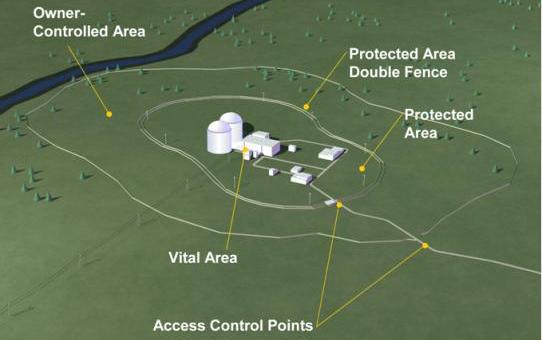Nuclear power plants are among the most highly protected private-sector facilities in the nation. Our plants are built with multiple security and defensive features including:
- Extensive security features,
- Multiple back-up safety systems, and
- Highly trained staff and security forces
Because security threats are constantly evolving, we constantly reassess, refine and enhance the security programs at our nuclear plants. For example, after the September 11, 2001 terrorist attacks on the United States, the nuclear energy industry substantially enhanced security measures, increasing security personnel significantly and establishing more stringent cyber security rules. In recent years, we have enhanced cyber security measures even further.
Members of our security forces are often former military and police members, and are required to complete rigorous training and receive re-qualification training each year.
In addition, our security personnel are regularly subject to real-world challenges of simulated "force-on-force" attacks. Experts working with the U.S. Nuclear Regulatory Commission are responsible to plan, coordinate, and assess plant security response to a wide variety of simulated attacks.
Security zones around nuclear plants

All U.S. nuclear power plants have three security zones with increasing levels of physical security measures to prevent intruders from accessing the plant.
- Owner-Controlled Area: A buffer zone surrounding the plant's Protected Area, controlling access to the property.
- Protected Area: Areas closer to the power plant have multiple physical barriers and state-of-the-art electronic systems that prevent or detect any intrusion attempts by outsiders. Access to this area is highly restricted, involving personnel screening and multiple-entry checkpoints.
- Vital Area: Located within the Protected Area, the Vital Area houses the reactor buildings and contains additional combinations of physical barriers, electronic systems, and administrative controls to protect the nuclear units.